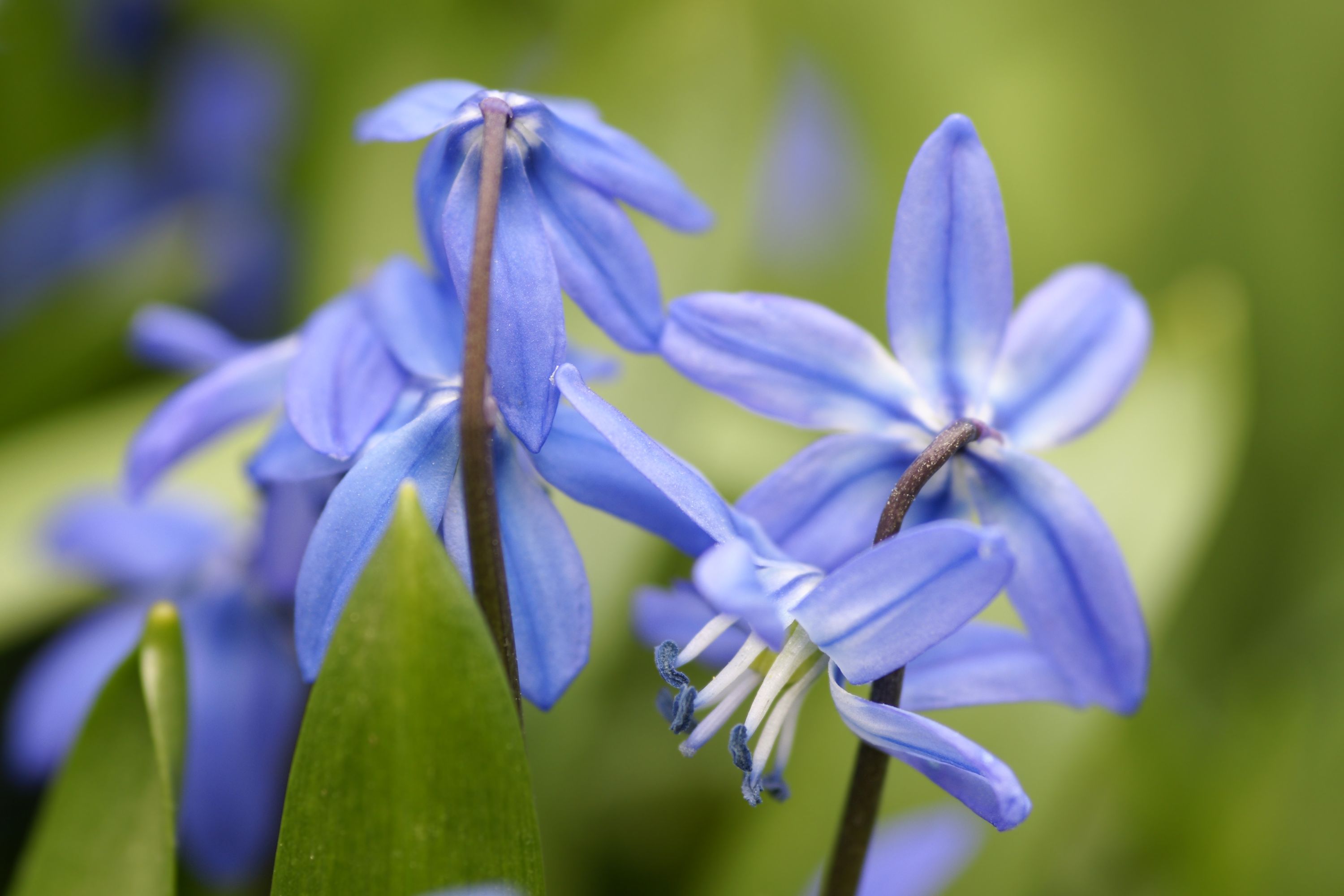Siberian squill
(Scilla siberica)

Description
Scilla siberica, the Siberian squill or wood squill, is a species of flowering plant in the family Asparagaceae, native to southwestern Russia, the Caucasus, and Turkey. Despite its name, it is not native to Siberia. Growing to 10–20 cm (4–8 in) tall by 5 cm (2 in) wide, it is a bulbous perennial, with two to four strap-shaped leaves appearing in early spring, at the same time as the nodding, blue, bell-shaped flowers. The flowers have six tepals and six stamens, and are arranged singly or in racemes of two or three. Petals may be reflexed to the horizontal when sunlight is bright, but are more often cup-shaped. The flowers are usually blue, but those of Scilla siberica var. alba are white. The stamens of Scilla are separate, unlike those of the related genus Puschkinia, which are fused into a tube. The pollen is dark blue. After flowering, the flower stems become limp as capsules (pods) mature. At maturity, the capsules become purple and split open, releasing small, dark brown seeds. When the seeds are mature, the leaves wither and the plant goes dormant until the next spring. The seedlings are hollow-leaved. S. siberica is cultivated for its bluebell-like flowers. It naturalizes rapidly from seed. At 15 cm (5.9 in), it is suitable for planting in grass, and will spread by seed to form large colonies that go dormant by the time grass needs to be mowed. In the Midwestern United States it is becoming invasive in some situations. This plant has gained the Royal Horticultural Society's Award of Garden Merit. Scilla is a genus of about 50 to 80 species of bulb-forming perennial herbaceous plants in the family Asparagaceae, subfamily Scilloideae. Sometimes called the squills in English, they are native to woodlands, subalpine meadows, and seashores throughout Europe, Africa and the Middle East. A few species are also naturalized in Australia, New Zealand and North America. Their flowers are usually blue, but white, pink, and purple types are known; most flower in early spring, but a few are autumn-flowering. Several Scilla species are valued as ornamental garden plants. Scilla has most recently been classified as belonging to the family Asparagaceae, subfamily Scilloideae; that subfamily was formerly treated as a separate family, Hyacinthaceae. Prior to that it was placed in the tribe Hyacintheae of the family Liliaceae. The precise number of Scilla species in the genus depends on which proposals to split the genus are accepted.
Taxonomic tree:







